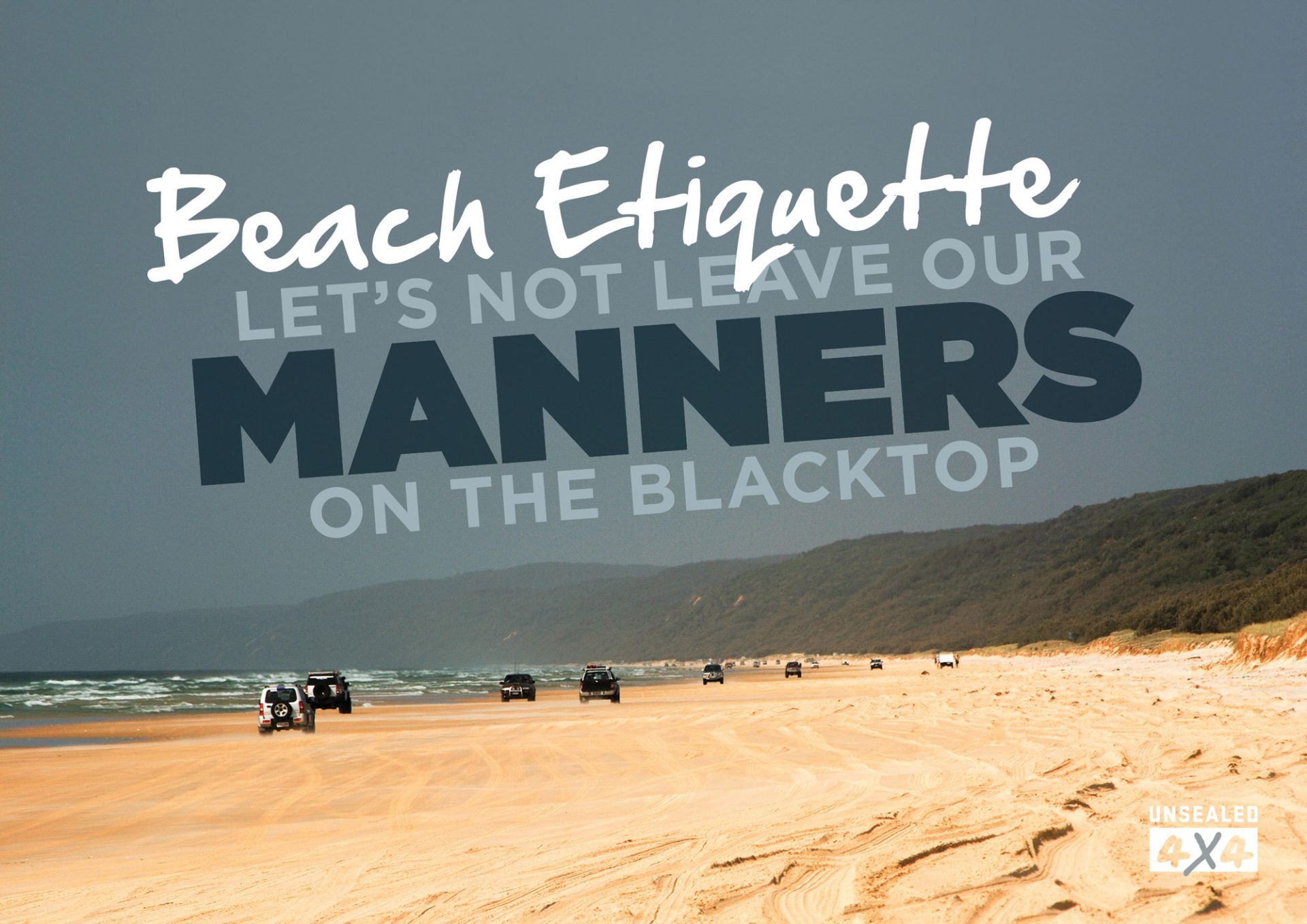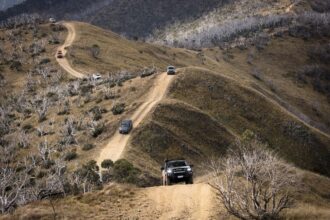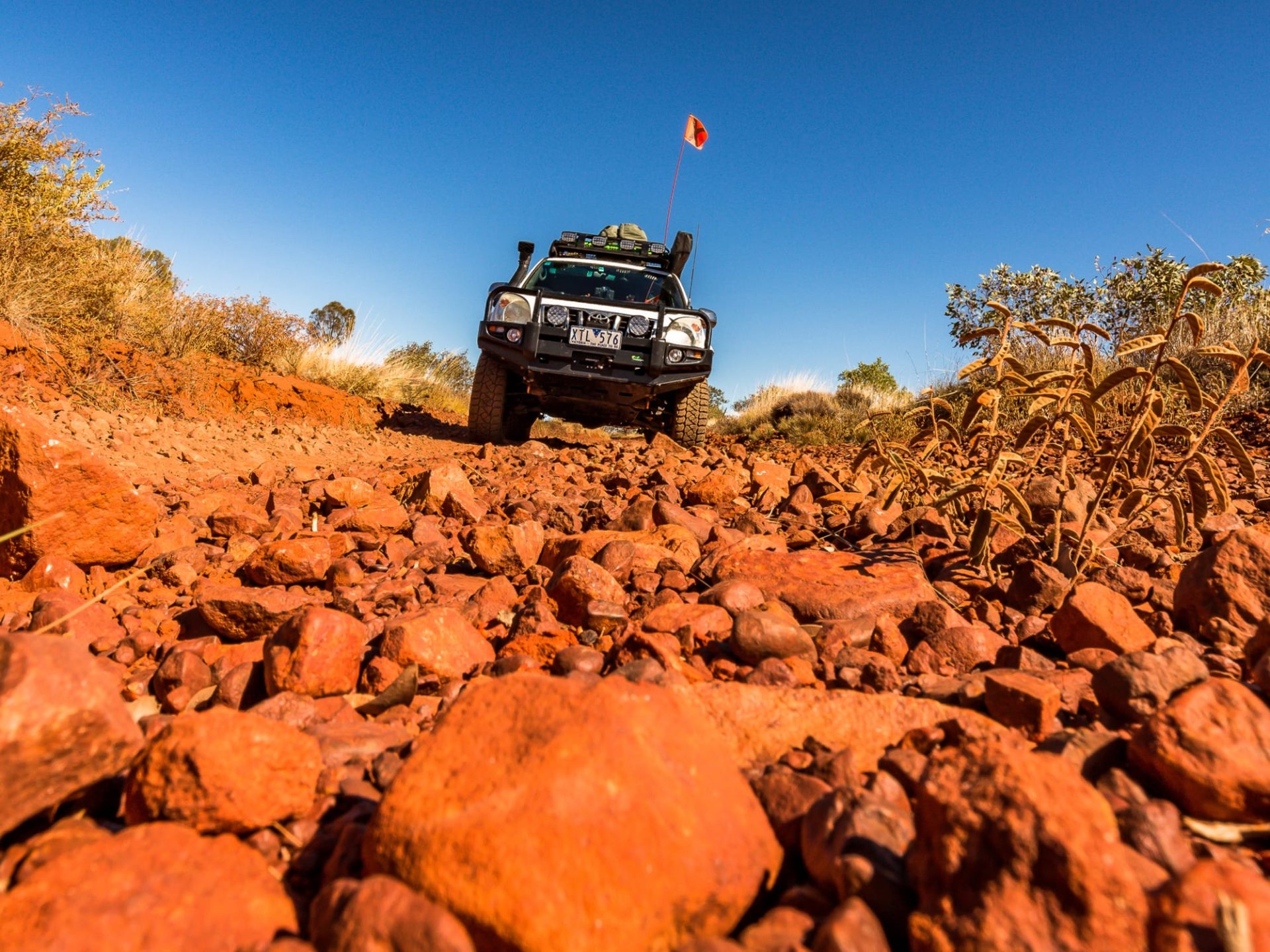Let’s not leave our manners on the blacktop
You have ploughed through the Friday afternoon traffic and arrived at your favourite beach for a weekend’s camping with the family. The sky is blue, the weather perfect and the first guy you see fishing has bagged a monster… how good is this!
We recently had a weekend away during busy school holidays and it wasn’t long before I thought someone had taken the lid off the dickhead jar and they had congregated on our section of beach. It made me wonder if anyone still knew the etiquette of beach camping and driving.
This is not a wowser’s guide to camping killjoy. Circumstances change depending on peak periods, the season or even if the fish are biting – but what doesn’t change is the need to apply basic common sense and good manners.
So what is the etiquette of beach camping and driving?
Camping
- Respect others’ personal space. When someone sets up camp so close you can share tent pegs, it’s guaranteed to get the hairs on the back of your saintly grandmother’s neck bristling. Struth! We go camping to get away, not to play footsies with the next tent’s occupant. Give people as much space as is practical. If you don’t, it might just be your weekend that is ruined as happened a few Easters ago when two couples erected their tents right next to my mate, Ray. What they didn’t know was that he snored liked a wounded bull. Next morning I was starting the fire and Ray, true to form, was snoring up a storm. The campers who almost literally shared Ray’s pillow were already up and pacing the camp. As the sides of Ray’s tent sucked in and then billowed out with each snore, he suddenly stopped. “Thank Christ for that,” one of them exclaimed. They were packed and gone by 8.30am.
- Fires. I love to cook on an open fire. There is nothing more relaxing than sitting around the fire chewing the fat over a XXXX or four, watching the flames well into the night. But fires are being banned in more areas and unless we respect the local rules and use common sense, it is only going to get worse.
Don’t start a fire if there is a fire ban. As basic as that sounds, 3 out of 10 campers couldn’t come to grips with the concept on our trip. The bush on the sand dunes was tinderbox-dry and (combined with strong breezes) would have gone up in a flash – heading straight for several inland campgrounds.
Use an existing fire pit. If you want to see another pile of sand, go to Coober Pedy and dig for opals.Don’t throw glass bottles into a fire; glass and sand do not play well together.
Where required, such as most National Parks, bring your own firewood.
A pet hate of mine is seeing branches on live trees with a squillion little cut marks on them. You are not going to cut it down with your tomahawk regardless of how long your holiday is; and even if you did, it is going to produce more smoke than heat. Seriously, this sort of stuff gives officialdom the excuse to close access. Importantly, ensure your fire is out before you leave camp. Spread the coals and douse them with water. Never cover the fire with sand as it effectively becomes an oven. If someone were to step or fall into it, they would be severely burnt.
- Dunny. Remembering that someone else is going to use the area after you, just as you are using it after someone else, is the key here. Position your dunny on the edge of the camping zone or beyond. Obviously not quite so far away as to be in the next person’s camp.
Depending on how long the handle on your shovel is, you might be able to dig a 2-, 3- or even a 4-day hole. Just remember that you need to have at least 300mm of sand on top when you’re finished. An excellent practice is to leave a stick poking up to show where your pit was.
- Leave it better than you found it. Take your rubbish with you and put it in a bin. Have an ‘emu parade’ before you leave… it’s a great way to keep the kids occupied.
- Noise. You have memorised the words to ‘Khe Sanh’ and are in fine voice. However other camps have turned in for the night and as good as your Barnsey impersonation sounds to you, it sucked big-time after the third beer and got 20 times worse after the 10th. Trust me on this one. Respect and consideration in big doses will help make everyone happy campers.
- Keep an eye on the kids. Remember that not all 4WDers may be as responsible behind the wheel as you. Kids chasing a ball are not even on their radar. Equally it may have been great fun digging that half-metre deep hole in the middle of the hard sand where the cars drive – but serious damage is going to happen if someone drives into it.
Beach Driving
What is it about feeling rubber digging into the sand that turns normal law-abiding 4WDers into Formula 1 drivers? Why do we drive on the left-hand side of the road, indicate when changing lanes, refrain from drinking and driving, obey speed limits (well, most of them) all the way to the beach and then – suddenly – disobey everything which was keeping us safe? If the logic isn’t Irish, it is at least Kiwi! Am I missing something here? Seriously, it isn’t rocket science so let’s take a stroll through beach driving.
- Normal Road Rules Apply with speeding and drink driving. If you don’t abide by normal road rules, especially speed limits and drink driving, you are very likely to have a sad ending to your camping trip. Police are increasingly monitoring beaches with speed traps and conducting drink driving checks. Just because you have your bathers on doesn’t mean you can be a bloody idiot and drink while you drive, or treat the beach as your personal speedway.
- Watch out for local rules. Additional rules governing beach access set by local shires may apply. These will normally be well sign-posted and implemented for specific local reasons.
- Keep to the left and use your indicators. This is the concept that the F1 drivers have most trouble coming to grips with. It particularly applies at mid-tide when there’s a tantalising section of hard sand that everyone wants to own. We were keeping left, with the LH indicator blinking away, which put us near the water’s edge. The guy coming up the beach, with no indicator on, was horrified that I held my line. Gimme a break… where did he expect me to go? Effectively cross the road onto the right-hand side with vehicles coming in the opposite direction, or go submariner! Going into the soft sand will not kill you, but hitting another 4WD head-on might. If everyone keeps left of the oncoming traffic and uses their indicators to let others know what they’re doing, it will be really simple (and, more importantly, SAFE).
- Be patient. It amazes me that people on holidays with all day to do nothing are so impatient. We watched a car get stuck at a beach exit and his three mates stopped to help. Two parked up the track a bit and the third backed up to snatch him. With four 4WDs blocking the track, and two of them unhooking recovery gear, what does the genius on the beach do? You guessed it: Took off and then got angry when he had to stop in the soft stuff, getting stuck! In two minutes the track would have been clear. Instead he sent rooster-tails everywhere and dug himself down to the axles.
- Let your tyres down and carry your own recovery equipment. As we were exiting the beach the bloke in front of us got stuck. Once he had stopped, I went around him and backed up to give him a tow. My first question was, “Are your tyres let down?” to which I got an affirmative answer. He already had his snatch out and attached it to my recovery point with his shackle. Two unsuccessful snatches and I went back and asked him what pressures he had in his tyres. 28psi. We dropped them to 18 and pulled him out easily. People are happy to help, but they like you to help yourself as well.
- Watch out for kids. They are here to have fun and may not be paying attention, so keep an extra eye out for them.










